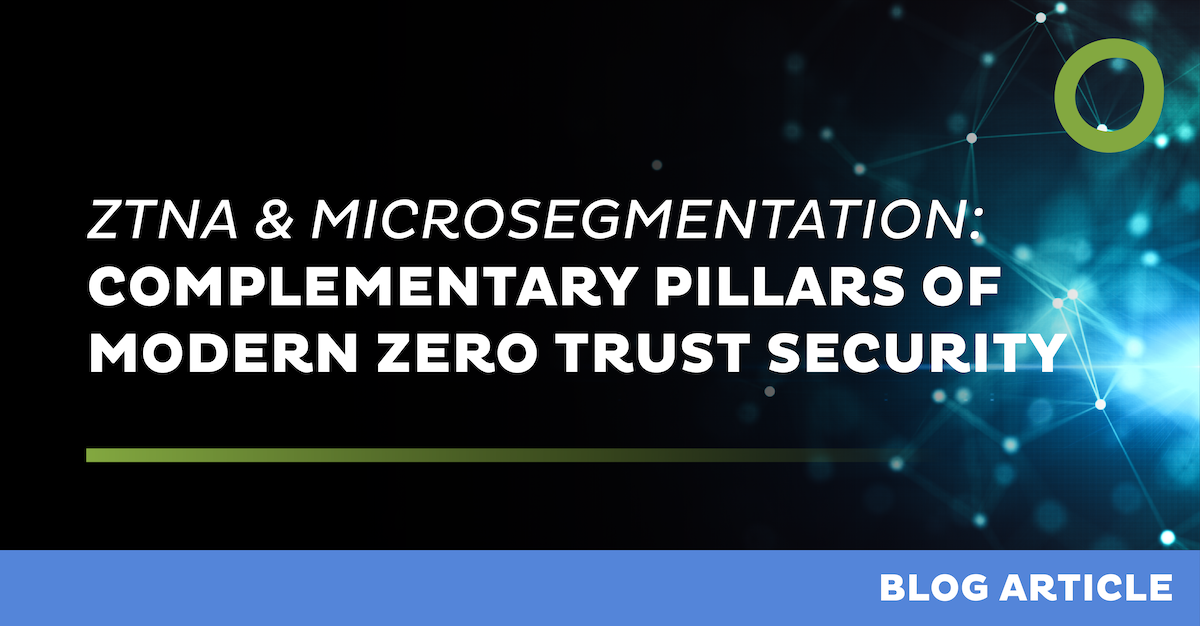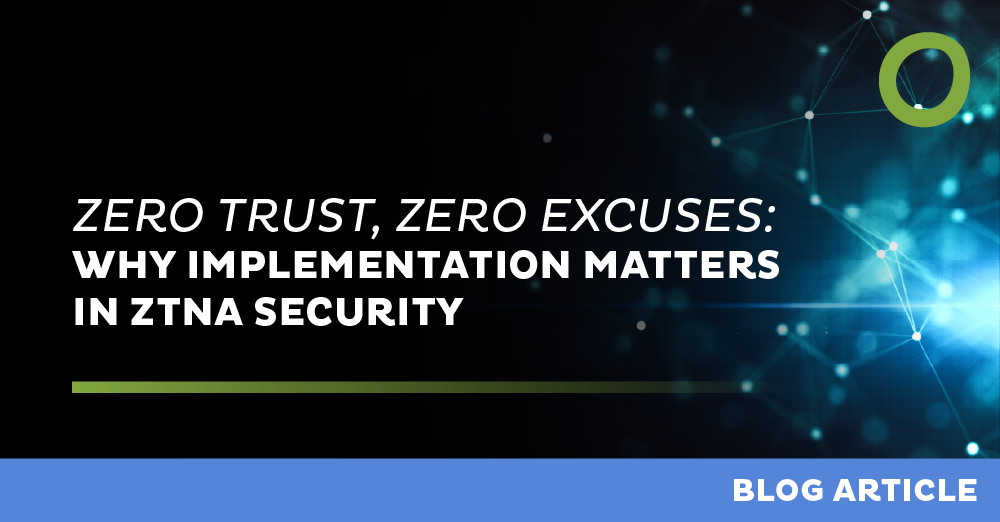
ZTNA and Microsegmentation: Complementary Pillars of Modern Zero Trust Security


Zero Trust is a security framework built on the principle of “never trust, always verify.” It assumes that no user, device, or application should be inherently trusted—whether inside or outside the network perimeter. Instead, access is continuously validated based on identity, context, and risk. While technologies like Zero Trust Network Access (ZTNA) and microsegmentation are often associated with this model, they address different aspects of Zero Trust – but could one replace the other?
The short answer: no, they are not substitutes. Instead, they are complementary controls that address different layers of the Zero Trust architecture. When implemented together, they deliver stronger protection against lateral movement and unauthorized access across hybrid environments.
ZTNA: Controlling Access at the Edge
ZTNA is often the entry point to a Zero Trust strategy. It ensures that users—whether employees, contractors, or partners—gain access only to the specific applications or services they are authorized to use. Instead of granting network-level access like traditional VPNs, ZTNA enforces granular, identity-based policies at the application level. This makes it ideal for securing remote access, hybrid work, and cloud migrations.
For example, a financial institution aiming to strengthen compliance with regulations like DORA can use ZTNA as a first step in its Zero Trust journey. By replacing legacy VPNs with identity-based access controls, remote employees and third-party advisors can securely connect to sensitive trading and client-data applications without exposing the wider banking network. This approach reduces lateral movement risks while maintaining compliance with strict data protection requirements.
ZTNA also plays a crucial role in operational technology (OT) environments. Under regulations like NIS2 and standards such as IEC 62443, industrial systems require strict access control. ZTNA can ensure that only authorized maintenance engineers access industrial control systems (ICS) — even remotely — significantly reducing the risk of unauthorized access or supply-chain compromise.
Microsegmentation: Containing Threats Inside the Network
Microsegmentation operates deeper in the stack, within the data center, cloud, and access environments. It divides networks into smaller, isolated zones and enforce least privilege between workloads. By segmenting traffic and maintaining clear separation between systems, microsegmentation reduces the attack surface and prevents lateral movement of malware or unauthorized users.
In contrast to traditional firewalls that primarily handle north-south traffic between internal and external networks, microsegmentation addresses east-west communication within and across environments. For example, in the event of a ransomware attack, segmentation at multiple layers ensures the infection remains contained to a single workload or application.
Microsegmentation can be enforced in different ways depending on context. In remote access scenarios, ZTNA introduces application-level access granularity using either agent-based or agentless approaches. When agents can be deployed, microsegmentation policies are applied directly to the endpoint, while for third-party contractors or unmanaged devices, agentless access ensures security without local installation. In OT and IoT or other workload-heavy environments, segmentation is implemented on firewalls to maintain isolation and operational continuity without disrupting legacy systems.
Why They Work Better Together
Where ZTNA focuses on who can access what, microsegmentation focuses on what can communicate with what. One is about external access control; the other is about internal containment. When integrated:
- ZTNA enforces identity-based access to applications.
- Microsegmentation enforces least privilege between workloads once access is granted.
- Combined, they close gaps between user access and workload protection.
Integration and Overlap Challenges
Organizations should be mindful of potential overlaps, especially around policy management and visibility. A unified security fabric — where identity, network, and workload controls are managed coherently — helps prevent redundant enforcement points and policy conflicts.
For instance, a global enterprise migrating workloads to multiple cloud providers found that identity policies enforced by ZTNA and workload policies enforced by microsegmentation sometimes conflicted, causing access delays. By consolidating both policies into a centralized policy engine integrated with their SSE platform, they eliminated conflicts, improved visibility across environments, and reduced operational complexity.
Vendors offering integrated SSE (Secure Service Edge) and Zero Trust architectures are increasingly bridging these layers, simplifying adoption.
Final Thoughts
ZTNA and Microsegmentation are not competing technologies—they are different dimensions of the same Zero Trust philosophy. Together, they deliver end-to-end visibility and control from the user to the workload. The question isn’t which one should you choose, but rather how to orchestrate them effectively to build a resilient, adaptive security posture.
Leave Complexity
Behind
To learn how Open Systems SASE Experience can benefit your organization, talk to a specialist today.
Contact Us



